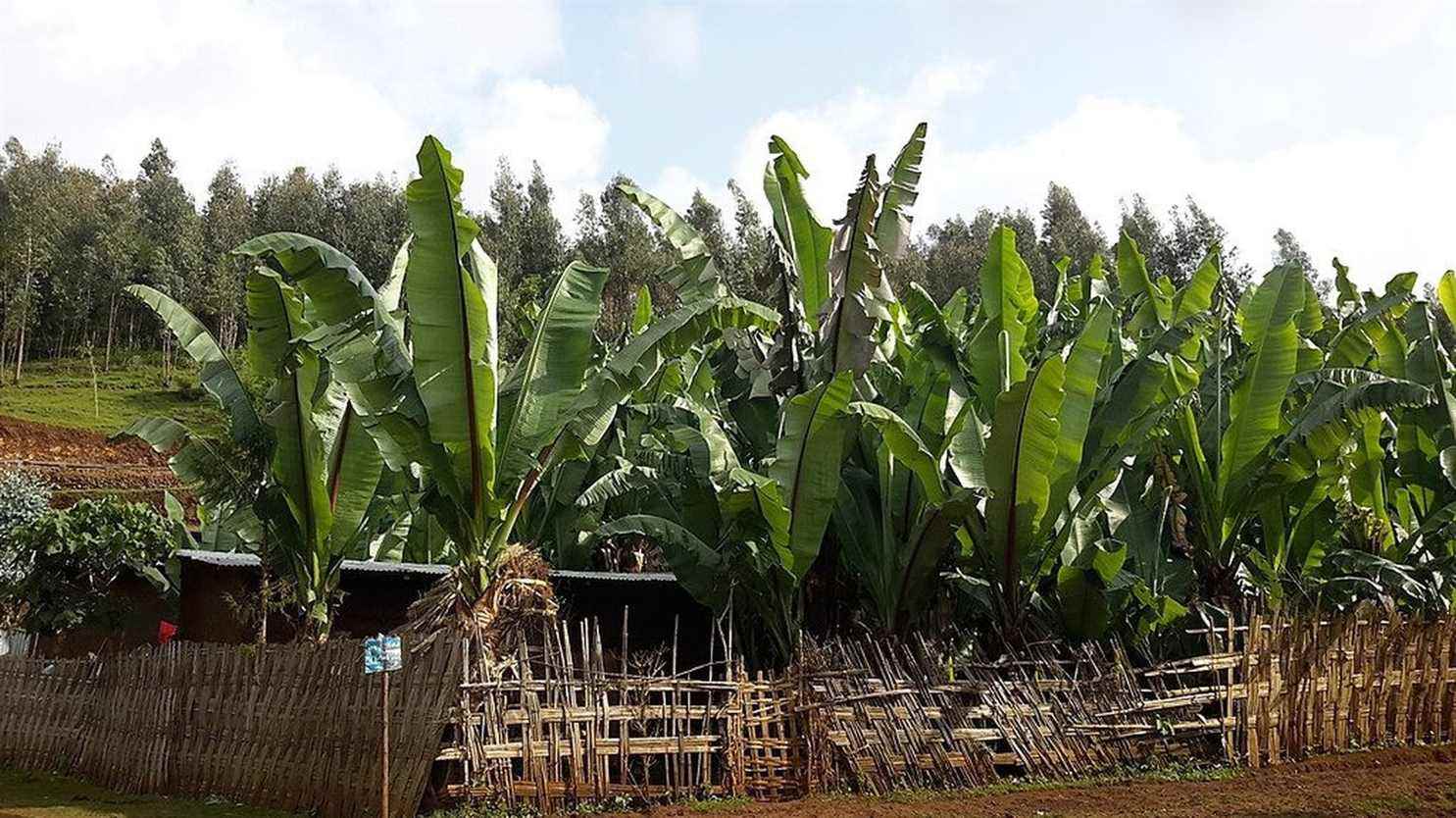A banana against climate change… Or rather to try to correct certain harmful effects of global warming, which lead to desertification and jeopardize crops. The ensete banana, also called “false banana” comes from Ethiopia, where it is well known. And researchers are constantly discovering its virtues.
Article written by
Posted
Update
Reading time : 2 min.
Ensete or ensete ventricosum of its learned name. In fact, this banana is very full. Banana also called “false banana”. Because you should not trust its appearance, which resembles that of its cousin the banana that we know well: the fake banana cannot be eaten! The fruit is not edible, it is the pulp extracted from its stems and roots that carries the hopes of scientists. A new study just published in the Environmental Research Letter believes it could save lives in a warming world and making harvests ever more unpredictable.
The ensete banana is currently grown only in southwestern Ethiopia, in the highlands. It is consumed after fermentation in the form of porridge or bread. It is also used to feed animals or make medicine. Some 20 million Ethiopians depend on it every day. But the researchers estimate that it could be planted well beyond Ethiopian lands.
Scientists see it as a way out to guarantee food security and ensure sustainable development. They found that this banana has grown in wild forms as far away as South Africa. This opens up a vast field of possibilities. By modeling agricultural studies, the scientists projected themselves over the next forty years and they estimate that the ensete banana harvest could feed more than 100 million mouths and strengthen food security in Ethiopia of course, but also in Kenya, Uganda or still in Rwanda or Zambia.
The enset plant is used to make porridge and bread in Ethiopia, but scientists think it could be a new superfood with the potential to feed more than 100 million people in the face of climate change. @James_Borrell from @kewgardens explains ➡️https://t.co/pGYjikvmyh pic.twitter.com/f1ZqOZnUAk
— BBC World Service (@bbcworldservice) January 21, 2022
The researchers undertook to sequence the DNA of several hundred varieties to identify the most resistant. Food crop or relief crop in case of crop failure. It can be planted in any season, harvested all year round and is particularly hardy. It resists drought as well as torrid heat and frost. It is not for nothing, underlines the BBC, that the Ethiopians call it “the tree against hunger”. Tree indeed that rises up to 10 meters high. A banana to counter the effects of climate change which is already affecting yields and the distribution of basic foodstuffs in Africa but also beyond.
A banana that we should watch with more interest, believe the researchers who co-signed this study. The world absolutely must diversify its sources of food. We now depend for 40% of our calories on just three species: rice, wheat and corn. We need to open the basket to other species and why not to this cousin of the banana that comes to us from Ethiopia?
